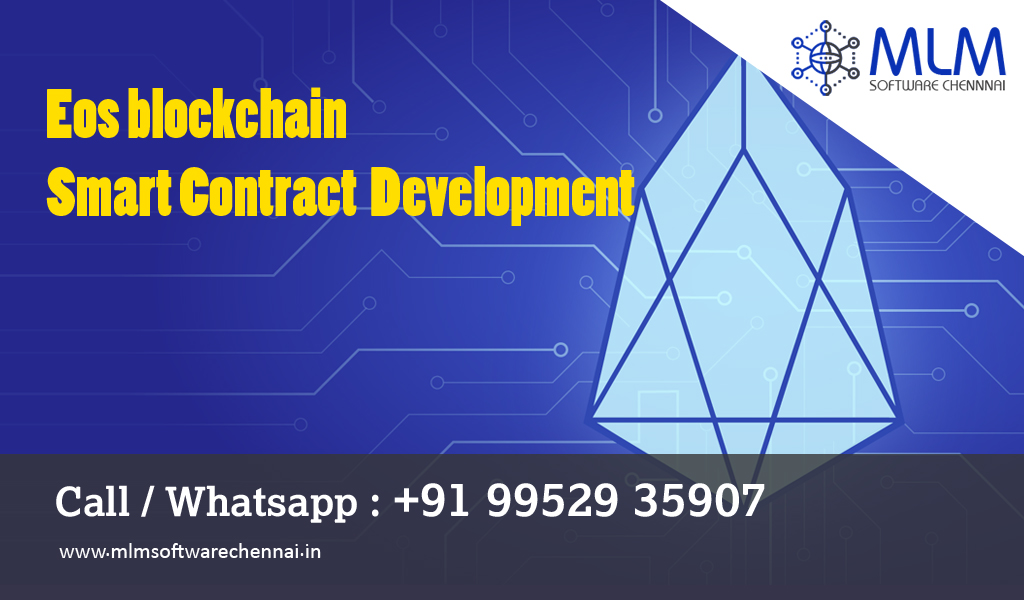What is EOS in Blockchain?
EOS is a blockchain-based, decentralized system that enables the development, hosting, and execution of commercial-scale decentralized applications (dApps) on its platform.
How does EOS Blockchain work?
EOS works on an ownership model whereby users own and are entitled to use resources proportional to their stake, rather than having to pay for every transaction. So, in essence, if you hold N tokens of EOS then you are entitled to N*k transactions.
Introduction about EOS smart contract :
Simple words about contract:
A contract defines a digital asset and a set of inputs/rules to be adhered to by both daily basis, any contract is meant to ensure an agreement between parties in order to complete a particular service or transactions which attain the goal of meeting their common queries. The transactions will complete when it’s possible as long as all of these strategies are met.
EOS smart contract:
Likewise EOS smart contracts acts in the same thing, it offers a structure for obligations between the parties in order to process financial transactions. Blockchain-registered EOS SCs are executed by executing general contract rules and requirements, the records of which (legal transfers and moves) are transparently stored on the EOS blockchain.
EOS Decentralized Applications:
simply EOS, is a kind of software featuring blockchain architecture. EOS was created in order to scale decentralized applications (DApps) development and improve performance.
What is the major feature of Eos?
Let’s take a closer look at EOS’ major features. Basically, EOS aims to solve three of the biggest blockchain problems:
-
speed
-
scalability
-
flexibility
What is specialty in EOS and why to use EOS?
To increase scalability, EOS works with an operative construction that allows application creation. EOS software provides personal authenticated accounts, a user database, and options for communication and app planning via numerous central-processing unit cores or clusters.

How to develop EOS smart contract?
Here our blog slightly explains how to establish a local blockchain to work with EOS smart contracts.
1. Starting a Node – Starting a node provides blockchain is live, capable of block creation and further usuage.
2. Wallet creation – A wallet is created with private key for blockchain authorization. The keys are kept in encrypted format which is stored safely by a password manager.
3. contract loading – The next step is to set a system contract. The contract is generally used for development.
4. Account creation – After the completion of basic contract. it is right time to create the accounts.
Uses of EOS smart contract:
Scalable:
EOS supports thousands of scalable dapps, inter-blockchain communication, separated authentication from execution.
Flexible:
Freeze and fix broken applications, generalized role based permissions.
Usable:
Web toolkit for interface development, self describing interfaces, declarative permission scheme.
EOS Technology
-
increased scalability
-
high throughput (processing a huge number of transactions per second)
-
cost efficiency (due to the elimination of charges)
-
fast, easy dApp deployment process
-
role-based permission management
Benefits of EOS platform
Provides cost efficiency:
To satisfy all user needs, EOS offers a free, flexible platform for sending transactions, where one no longer has to pay for services provided and additional bonuses. It’s possible to provide wide range of monetization strategies for business, organizations and enterprises.
EOS offers enhanced security:
EOS supports smart-contract code versioning, allowing developers to add new features to existing DApps.
Low Latency
EOS provides all users with feedback, with a delay no longer than several seconds. This is crucial to attract more users and eliminate the use of less-competitive blockchains. Hence, supporting low-latency transactions is a priority.
Consistent Performance
EOS supports fast, consistent performance to handle applications that require sequential steps for execution.
Parallel Performance
Scalable decentralized applications often divide work capacity across numerous nodes and central processing units. The EOS platform enables efficient, enhanced parallel performance to handle the DApp workload.

 WhatsApp -(+91) 995 293 5907
WhatsApp -(+91) 995 293 5907